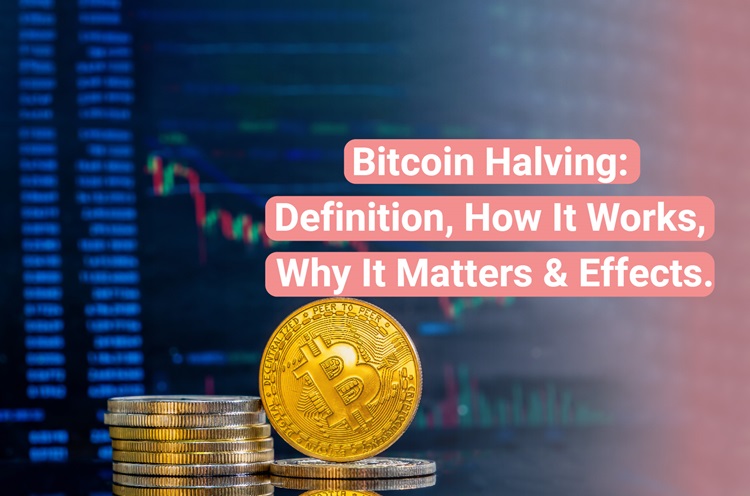Bitcoin halving is an event that takes place every four years or so in the Bitcoin network. It is designed to limit the amount of Bitcoin that is mined and to counter any inflationary effects on Bitcoin by lowering the reward amount and maintaining scarcity. In this article, we will discuss the basics of the Bitcoin network, how the halving works, why it matters, and its effects on the Bitcoin price.
What Is Bitcoin Halving?
Bitcoin halving is a process that occurs when the reward for mining Bitcoin transactions is cut in half. This event happens every 210,000 blocks, or roughly every four years. The halving is designed to limit the amount of Bitcoin that is mined and to counter any inflationary effects on Bitcoin by lowering the reward amount and maintaining scarcity.
How Does Bitcoin Halving Work?
To understand a Bitcoin halving, you must first know how the Bitcoin network operates. Each full node contains the entire history of transactions on Bitcoin and is responsible for approving or rejecting a transaction in Bitcoin’s network. The Bitcoin mining algorithm is set with a target of finding new blocks once every 10 minutes. This is done by miners, who are people, groups, or businesses that focus on mining for its profitability. When a miner finds a new block, they are rewarded with a certain amount of Bitcoin. This reward is halved every 210,000 blocks, or approximately every four years.
Why Does Bitcoin Halving Matter?
The Bitcoin Halving is intended to counter any inflationary effects on Bitcoin by lowering the reward amount and maintaining scarcity. This is important because it ensures that Bitcoin remains a scarce asset and its value is not diluted by an increase in the number of coins. Additionally, this halving event is a major event in the Bitcoin community and is often seen as a sign of the health of the network.
What Are the Effects of Bitcoin Halving?
Inflation is one of the key concepts behind halving the reward. By reducing the amount of Bitcoin that is rewarded for each block, the Bitcoin network is able to reduce the rate of inflation. This helps to ensure that the value of Bitcoin remains stable and that its price is not artificially inflated. Additionally, the halving event can have a positive effect on the price of Bitcoin. This is because the halving reduces the supply of Bitcoin, which can lead to an increase in demand and thus a rise in the price.
The Bitcoin Halving: Everything You Need to Know
The exact time of the halving is determined by the network hashrate. The first halving occurred on November 28th, 2012, marking the genesis of a transformative era and slashing the mining reward from 50 to 25 Bitcoins per block. After trading at $650 during the 2016 Halving Day, Bitcoin’s price soared to $758 only 150 short days later. The third halving occurred on May 11th, 2020, further halving the mining reward from 12.5 BTC to 6.25 BTC per block. One hundred fifty days later, the Bitcoin price would rise to $127.00.
Conclusion
The Bitcoin halving is an important event in the Bitcoin network and is designed to limit the amount of Bitcoin that is mined and to counter any inflationary effects on Bitcoin by lowering the reward amount and maintaining scarcity. The halving event can have a positive effect on the price of Bitcoin, as it reduces the supply of Bitcoin and can lead to an increase in demand and thus a rise in the price. Additionally, the halving event is a major event in the Bitcoin community and is often seen as a sign of the health of the network.
